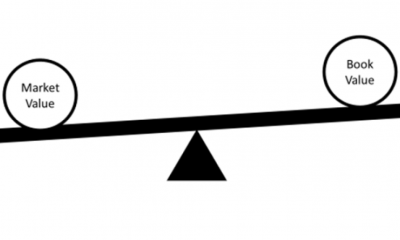Terms
Descriptive Statistics Definition, Overview, Types & Examples

Descriptive statistics is a branch of statistics that is used to summarize and organize data in a meaningful way. This type of statistics is used to describe the basic features of a dataset, such as the mean, median, mode, range, variance, and standard deviation. Descriptive statistics can also be used to visualize data, such as through the use of histograms and scatterplots.
In this article, we will provide an authoritative overview of descriptive statistics. We'll define the term, explain its purpose, discuss its different types, and provide an example.
Descriptive Statistics Definition
Descriptive statistics is the branch of statistics that focuses on organizing and summarizing data. It is used to describe the characteristics of a dataset, such as the mean, median, mode, range, variance, and standard deviation. Descriptive statistics can also be used to visually represent data, such as through the use of histograms and scatterplots.
Descriptive Statistics Purpose
The purpose of descriptive statistics is to make data more meaningful and easier to interpret. Using descriptive statistics, researchers can summarize large and complex datasets into manageable information. This information can then be used to make decisions, test hypotheses, and identify trends or patterns.
Descriptive Statistics Types
There are several types of descriptive statistics. The most common ones are:
Mean – The mean is the average of a dataset. It is calculated by adding up all the values in a dataset and then dividing that sum by the number of values.
Median – The median is the middle value in a dataset. It is calculated by arranging the data from smallest to largest and then finding the middle value.
Mode – The mode is the most frequently occurring value in a dataset.
Range – The range is the difference between the largest and smallest values in a dataset.
Variance – The variance is a measure of how much the values in a dataset differ from each other.
Standard Deviation – The standard deviation is a measure of the spread of a dataset.
Descriptive Statistics Examples
For example, let's say we have a dataset consisting of five numbers: 1, 3, 5, 7, and 9.
The mean of this dataset is 5 (1+3+5+7+9 = 25; 25÷5 = 5).
The median of this dataset is 5 (arrange from smallest to largest: 1, 3, 5, 7, 9; the middle value is 5).
The mode of this dataset is 5 (5 occurs the most frequently).
The range of this dataset is 8 (9 – 1 = 8).
The variance of this dataset is 8 (1+4+1+4+1 = 11; 11÷5 = 2.2; 2.2 x 4 = 8.8).
The standard deviation of this dataset is 2.83 (8.8÷3 = 2.93; 2.93^1/2 = 2.83).
Conclusion
Descriptive statistics is a branch of mathematics that deals with collecting, organizing, summarizing, analyzing and interpreting data. It is used to describe the characteristics of a group of data, such as the mean, median and mode. Descriptive statistics can also be used to identify relationships and trends in data. Examples of descriptive statistics include measures of central tendency, measures of variability, measures of position and measures of association. With a good understanding of descriptive statistics, we can better understand and interpret data.






